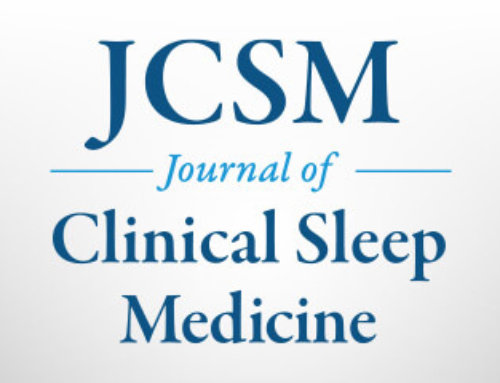Westchester, Ill.— A study in the Oct. 1 issue of the journal Sleep shows that the successful manipulation of sensorimotor rhythm (SMR) amplitude by instrumental SMR conditioning (ISC) improved sleep quality as well as declarative learning. ISC might thus be considered a promising non-pharmacological treatment for primary insomnia.
This study allowed participants to “shape their own brain activity” by directly modifying certain electroencephalographic (EEG) activities. Findings support the theory that an increase in relaxation and a decrease in muscle tension might lead to less movement during sleep and thereby augment the restorative and learning enhancement benefits of sleep. Significant changes in SMR amplitude from early to late conditioning sessions confirmed the success of ISC. EEG changes transferred into sleep and improved immediate memory retrieval after learning. The study’s 27 participants were able to fall asleep faster (decrease in “sleep onset latency”) and increase memory performance after two weeks of ISC.
“The aim of the study was to improve sleep quality and memory performance by ‘rewarding’ the existence of certain activities of the brain,” said the study’s workgroup leader, Dr. Manuel Schabus, researcher for the division of physiological psychology at the University of Salzburg in Austria.
Instrumental conditioning of different EEG parameters has long been used as a therapeutic tool to treat different kinds of disorders, including epilepsy and attention–deficit/hyperactivity disorder (ADHD). Prior research has found that ISC can be effective in treating psychophysiological insomnia, a form of insomnia associated with worrying.
Twenty-seven healthy subjects were randomly assigned to either an ISC group or a randomized frequency group in order to examine the effects of ISC on sleep as well as declarative memory performance. Participants attended the laboratory on 13 occasions, during 10 of which they were connected to a feedback system that allowed them to keep track of their current brain activity by looking at a computer screen. Participants were encouraged to use physiological relaxation combined with positive mental activity in order to “shape their brainwaves”; all participants remained blind to their group assignment and were not debriefed until after the investigation had ended.
Participants trained in the enhancement of the SMR over the course of two weeks and were rewarded with a pleasant image whenever they succeeded to enhance this specific type of brain activity. Subjective data about sleep quality and depression and objective data about memory and intelligence were also collected. Participants were asked to perform a declarative word-pair association task before and after a 90-minute nap periods in the laboratory; naps were taken before and after treatment sessions.
The researchers suggest that future studies focus on the effects of ISC on various cognitive tasks and address the potential clinical significance of this kind of training for the long-term treatment of insomnia.
Sleep is the official journal of the Associated Professional Sleep Societies, LLC (APSS), a joint venture of the American Academy of Sleep Medicine and the Sleep Research Society.The APSS publishes original findings in areas pertaining to sleep and circadian rhythms. Sleep, a peer-reviewed scientific and medical journal, publishes 12 regular issues and 1 issue comprised of the abstracts presented at the SLEEP Meeting of the APSS.
For a copy of the study, “Instrumental Conditioning of Human Sensorimotor Rhythm (12-15 Hz) and Its Impact on Sleep as Well as Declarative Learning,” or to arrange an interview with an AASM spokesperson, please contact Kelly Wagner, AASM public relations coordinator, at (708) 492-0930, ext. 9331, or kwagner@aasm.org.
###







